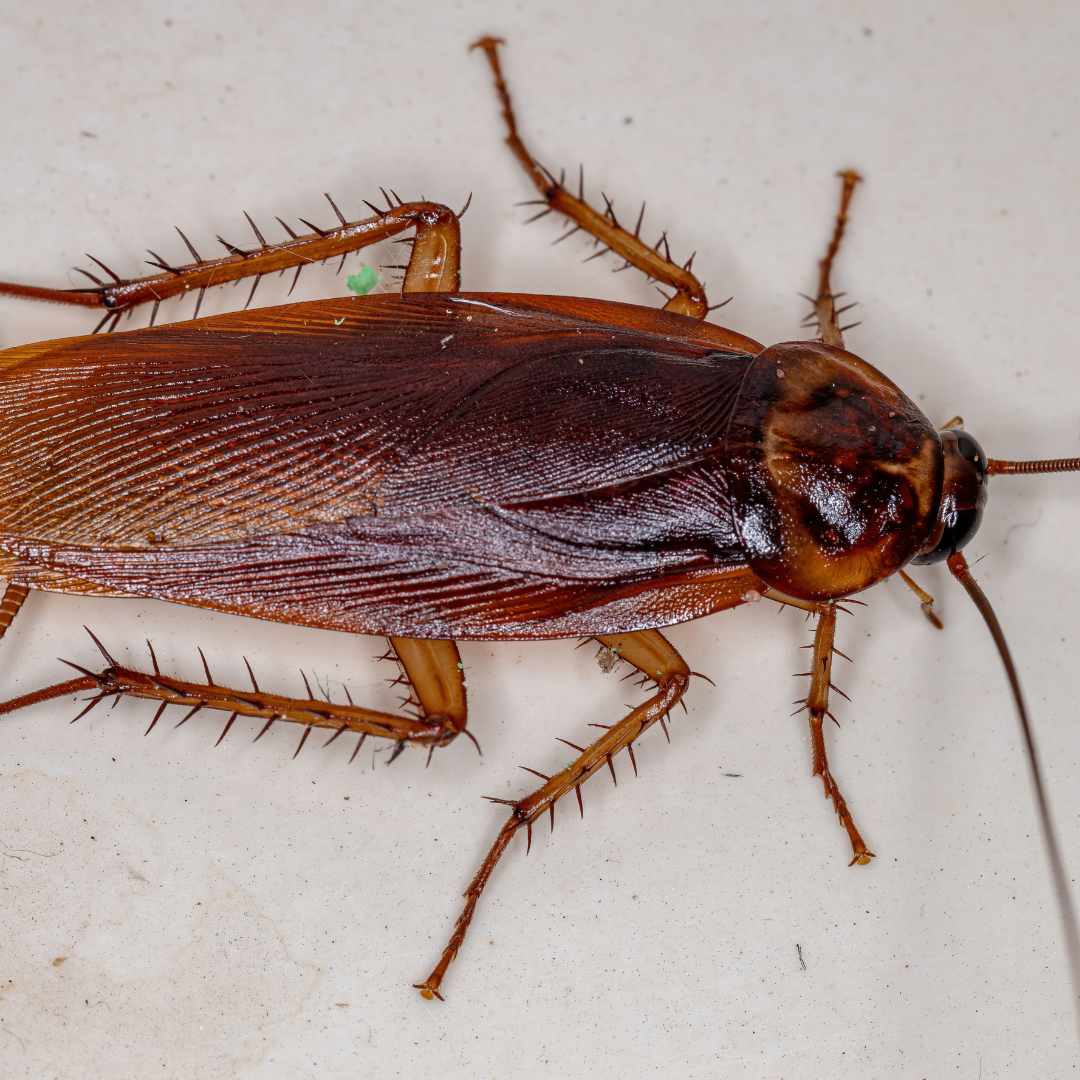American cockroach

Proud Supporter of Disabled Veterans
No Contracts
Services provided without written contracts.
Introduction to
The American cockroach (Periplaneta americana), also known as the palmetto bug or waterbug, is one of the largest and most notorious cockroach species. These insects are known for their size, speed, and the ability to fly short distances. Found in homes, commercial buildings, and sewers, American cockroaches are resilient pests that can pose significant health risks due to their potential to spread bacteria and allergens. Understanding their biology, habits, and effective prevention methods is essential for managing infestations and maintaining a hygienic environment.
Recognition
American cockroaches are among the largest household cockroaches, measuring 1.5 to 2 inches (38 to 50 mm) in length. They have a reddish-brown color with a distinctive yellowish figure-eight pattern on the pronotum (the area behind the head). Unlike German cockroaches, American cockroaches have wings that extend beyond the abdomen, and they can fly short distances. Nymphs are smaller and lack fully developed wings but otherwise resemble adults in coloration. These cockroaches are often confused with other large roaches, such as the Oriental cockroach, but their size and coloration are distinguishing features.
Biology
American cockroaches undergo incomplete metamorphosis, progressing through three main life stages: egg, nymph, and adult. Females produce oothecae (egg cases) that contain approximately 16 eggs each. These oothecae are deposited in warm, moist environments where the eggs hatch in about 6 to 8 weeks. Nymphs go through several molts over a period of 6 to 12 months before reaching adulthood. Adult American cockroaches can live up to a year, during which time they can produce multiple oothecae. They are omnivorous scavengers, feeding on a variety of organic materials, including food scraps, decaying matter, and garbage.
Habits
American cockroaches prefer warm, humid environments and are commonly found in sewers, basements, crawl spaces, and kitchens. They are most active at night, hiding during the day in dark, moist areas. These cockroaches are adept at entering buildings through gaps around doors, windows, pipes, and other openings. Inside homes, they are typically found in kitchens, bathrooms, and utility rooms. American cockroaches are known for their fast running speed and ability to fly short distances when disturbed. Their presence can contaminate food, spread bacteria, and trigger allergies and asthma in sensitive individuals.
Prevention
Preventing American cockroach infestations involves maintaining good sanitation and reducing access to food, water, and shelter. Seal cracks and crevices around the home, especially around doors, windows, and pipes. Fix any leaks and reduce moisture levels in bathrooms, kitchens, and basements. Store food in airtight containers and promptly clean up spills and crumbs. Regularly take out the trash and keep garbage cans sealed. Use dehumidifiers in damp areas and ensure proper ventilation. Regularly inspect and clean areas where cockroaches are likely to hide, such as under appliances, in cabinets, and around plumbing fixtures.
Professional
If American cockroaches become a persistent problem, professional pest control services can provide effective solutions. STL Pest Control offers comprehensive treatments to eliminate cockroach populations from homes and commercial establishments. Their technicians are trained to identify cockroach hotspots and apply appropriate treatments, including baits, insecticidal sprays, and integrated pest management techniques. In severe cases, they may recommend ongoing maintenance plans to keep cockroach populations under control. Professional services ensure thorough and long-lasting control, providing peace of mind and a healthier living environment.



Our Office







